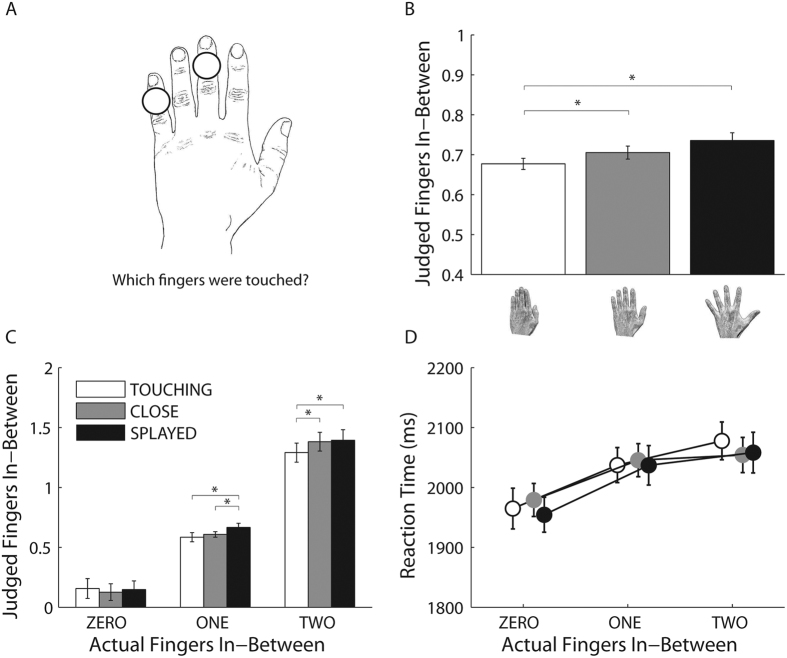Figure 2.
Schematic representation of the localization task (A) performed by the participants for the condition in which one finger was present in-between the two simultaneously stimulated fingers. In the example, the fingers were separated by one centimetre. Judged fingers numerosity as a function of posture (i.e., fingers touching, fingers close at 1 cm and fingers splayed) (B) and judged fingers numerosity for the different number of fingers in-between as a function of posture (C). Note that the judged number of fingers in-between was obtained indirectly by calculating the number of fingers in between the two fingers that the participant judged to have been stimulated. Reaction Times (RTs) for the different number of fingers in-between as a function of posture (i.e., fingers touching, fingers close at 1 cm and fingers splayed) (D). Error bars indicate 95% Confidence Intervals of the within participants variability (95%CI). *Denotes P < 0.05.

